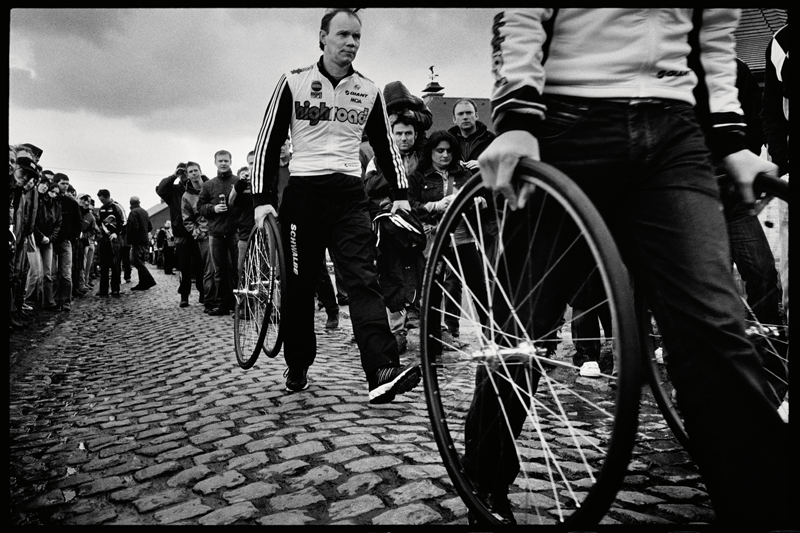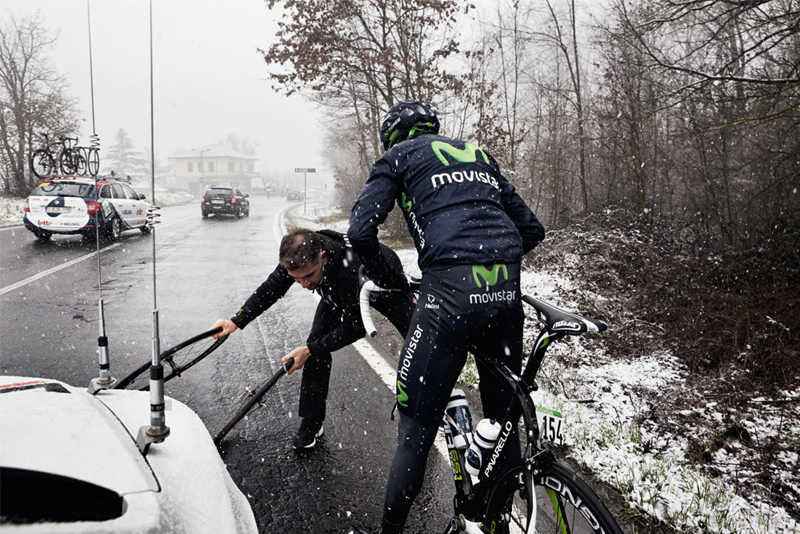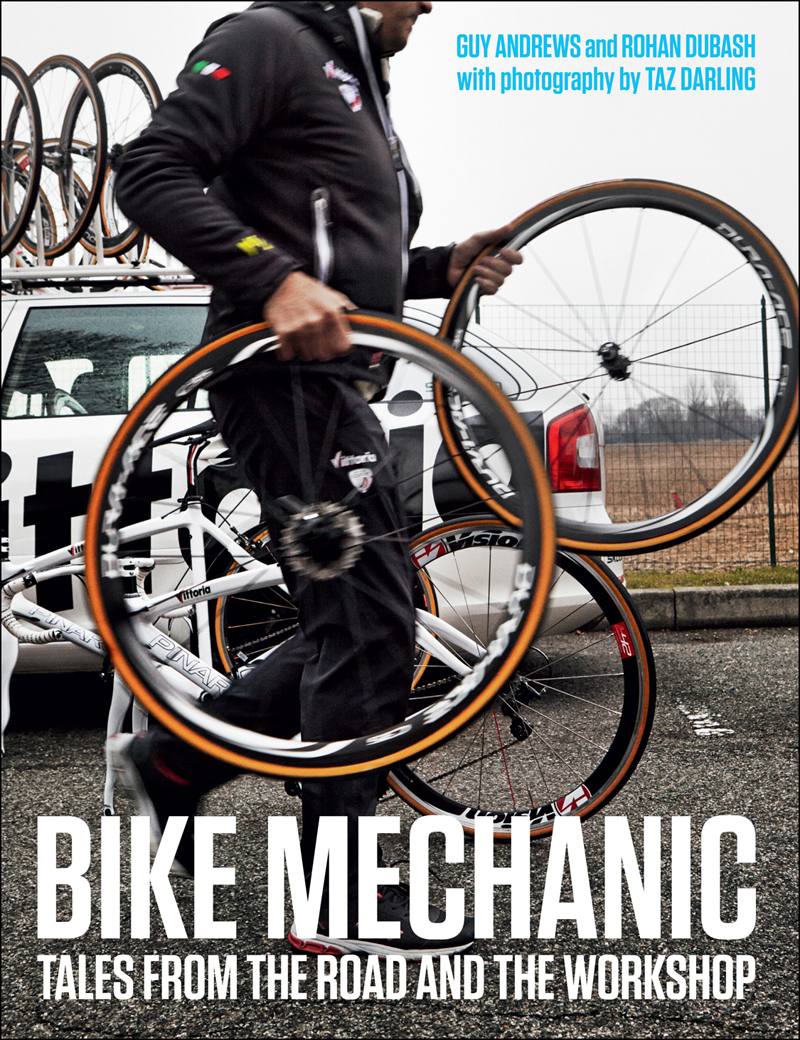When I first read the brief description of BIKE MECHANIC: TALES FROM THE ROAD AND THE WORKSHOP by Guy Andrews and Rohan Dubash, I was anticipating a quick read filled with profiles of team mechanics and humorous anecdotes of life on the road and the daily grind of cleaning and repairing bikes during events like the Tour de France.
What I was not anticipating was a beautiful 272 page coffee table book by the founder & editor, technical writer, and photo editor for Rouleur magazine, not only delving into the world of the professional race mechanic, but the tools of the trade.

BIKE MECHANIC: TALES FROM THE ROAD AND THE WORKSHOP is divided into three mains parts: On The Road, Hardware, and The Bike.
Part 1: On The Road deals with the nitty-gritty of life on the road and the impact that the professional race mechanic can have on the outcome of a race; from the early days of bike racing when there was no such thing as standardization, and mechanics had to improvise parts and repairs, such as before the 1955 Giro d’Italia when Ernesto Colnago noticed that the knee problems Fiorenzo Magni was suffering with that year were being caused by misaligned cottered cranks, and had to fashion and file new cotter pins in order to effect the repair. Magni went on to win his third Giro d’Italia that year, ahead of the great Fausto Coppi.
This section also goes into how the now ubiquitous neutral service cars and motorcycles at major races were a relatively recent innovation by Mavic, first appearing in 1972 at the Critérium du Dauphiné-Libéré when one team director’s car broke down before one day’s stage. Bruno Gormand, then the head of Mavic loaned the director his own car, and then came up with the idea of having a branded neutral service car as part of the race convoy, available to help any rider with fresh wheels after a puncture or a quick mobile repair when the rider’s team car was not available.
Thus began the history of one of most recognizable vehicles in the race caravan; the yellow Mavic car. Why yellow, you may ask? Similar to how Henri Desgrange chose a yellow jersey to represent the race leader, so that spectators would be able to easily discern the current race leader in the peloton, Gormand chose yellow because the cars would be easier to see in photos and on television.
Part 2: Hardware is the shortest of the three sections, but deals lovingly with the tools of the trade from the lowly but vital hex key, to facing & chasing tools, dropout alignment tools (seldom used in modern times with the disappearance of steel bicycle frames from the professional peloton), to torque wrenches to ensure bolts are tightened properly, tensionometers and micrometers for wheelbuilding, and my personal favorite: the Campagnolo 15mm hex spanner, colloquially known as “the peanut butter wrench” for its perfect shape to scoop and spread peanut butter from the jar during a marathon repair session.
Part 3: The Bike is the longest section of the book, comprising roughly half of the total 272 pages, serves as a basic repair manual, from frame preparation for a new build, gluing and mounting tubular tires, to cleaning and lubing the drivetrain, stunningly photographed as with the rest of the book. While there are more extensive repair manuals out there, I would wager that none are as extensively photographed, and for true bike geeks like me, it shows the tools from Part 2 in action.

For nearly 8 years, from 1994-2001 I worked in one of the top bicycle shops in the San Francisco Bay Area: A Bicycle Odyssey, in Sausalito. I learned many things from working at the shop, such as the importance of proper bike fit and that when you treat people as clients rather than customers, they have a tendency to come back. I also learned that when it comes to building and repairing bicycles, I was a fair-to-middling mechanic at best; that mechanics are craftsmen in their own right, worthy of much respect, and often underappreciated.
I would often find myself hanging out in the shop after closing with the owner and other mechanics while they finished repairs, just geeking out on their skills and hoping to absorb as much as I could. Unfortunately, I could never quite get the skills to translate from my brain to my hands, but some people are born to be wizards of the wrench.
BIKE MECHANIC: TALES FROM THE ROAD AND THE WORKSHOP is an homage to these wizards, their tools, and their craft. Buy and read the book, absorb the photography, and then go out and buy your favorite mechanic a bottle (or six) of their favorite libation to show them how much you appreciate what they do to keep your bike on the road and in perfect working order.
Bike Mechanic: Tales from the Road and the Workshop, by Guy Andrews and Rohan Dubash. Photography by Taz Darling. 7 1/4″ x 9 3/8″, 272 pp., $24.95, ISBN 9781937715182. Paperback with flaps. Full-color interior with photographs throughout.









